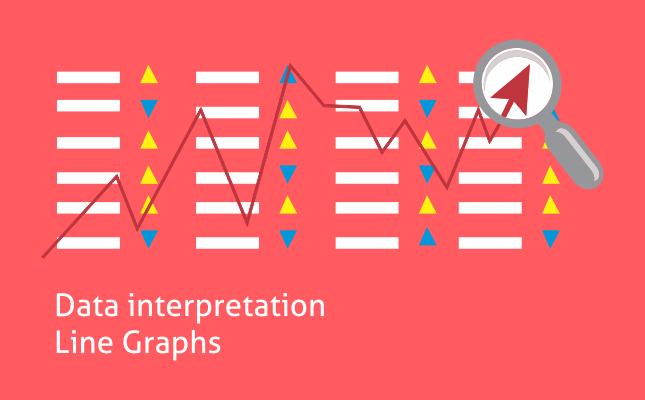
What is a Line Graph?
A modified version of Bar Graph representation is said to be a Line Graph. On connecting the upper points of two adjacent Bars of a Bar Graph we get a line and on further repeating this procedure with other Bars we get a Line Graph representation.
Solving a Line Graph question
Problems based on line graphs appear frequently in competitive exams having data interpretation as a component. Given below is a popular type of question asked from line graphs:
DIRECTIONS: Study the following graph carefully and answer the questions given below.

Example 1: In which of the following years was the percentage increase in income over the previous year the maximum?
Solution: Percentage increase= 100 × Increase/Previous year income. Option 3 is eliminated because there’s a decrease in income in 1991.
In 1989, percentage increase = 100 × 20/30 = 66.67%. In 1990, percentage increase = 100 × 15/50 = 30%. In 1992, percentage increase = 100 × 17.5/57.5 = 30.43% (All the data is in Rs '00 cr.) Thus, Option 1 is the answer. Alternatively, For maximum % change, numerator should be the greatest and the denominator should be smallest. The numerator for 1989 is the greatest, while the denominator for the same year is the lowest as compared to corresponding figures for 1990 and 1992. So, you need not to find the exact percent increase of all the options given. Hence, answer is 1st option.Example 2: What was the average income of the company over the years (approximately)?
Solution: Average in Rs '00 cr. = (30 + 50 +65 + 55 + 75 + 55)/6 = 55 =>Average= Rs 5500 cr. Hence, answer is 3rd option.
Example 3: What is the ratio of income to expenditure in the year 1990?
Solution: The income in the year 1990 is Rs. 6500 cr. and the expenditure is Rs. 5000 cr. Thus, the ratio in the year 1990 will be 6500/5000 = 1.3. Hence, answer is 2nd option.
Example 4: The total expenditure in 1988 and 1989 together was equal to the income in which of the following years?
Solution: The total expenditure in 1988 and 1989 together = Rs. 6000cr, which does not match with any other year's expenditure. So, the correct answer will be Option 4.
Key Learning
For any query about the topic or any other information, do write in the comment box given below.